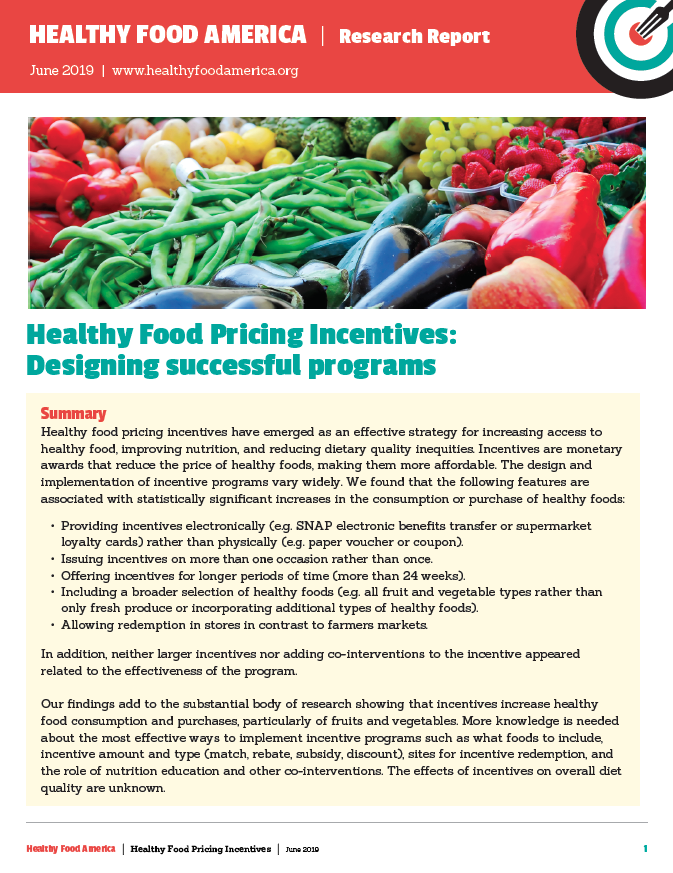Nutrition incentives are an effective strategy to make fruits and vegetables more affordable for people with lower incomes. We define a nutrition incentive as a subsidy (monetary award) that reduces the price of healthy foods, making them more affordable. Numerous reviews have demonstrated that incentives increase consumption, purchases, and sales of healthy foods, especially of fruits and vegetables.
This webpage contains information about the design features of nutrition incentive programs (e.g., incentive amount, how to provide it, where it can be used, what foods to include) and explores what features are associated with impacts on healthy food consumption and purchases. It also contains a Theory of Change developed for the United States Department of Agriculture’s Gus Schumacher Nutrition Incentive Program (GusNIP). GusNIP supports state and local programs that offer nutrition incentives to subsidize the purchase of fruits and vegetables for people participating in the Supplemental Nutrition Assistance Program (SNAP). The Theory of Change describes how the program works. Learn more about GusNIP at the Nutrition Incentive Hub.

CLICK TO ENLARGE OR DOWNLOAD (How GusNIP nutrition incentives work: a Theory of Change)





